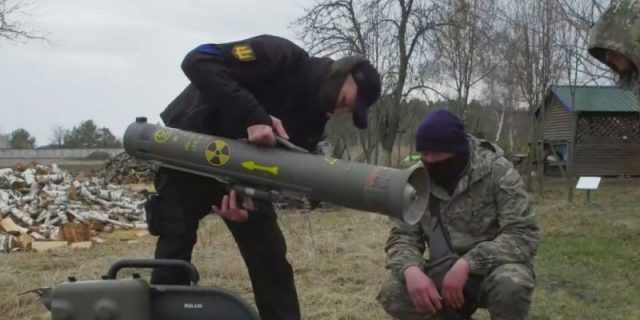The Milan anti–tank missile system, created jointly by Germany and France, is a fairly well-known thing, although far from fresh. For the first time it was adopted in 1972, and they began to develop it ten years before that.
Nevertheless, he deservedly received the title of one of the best ATGMS of the second generation, and it's not only about good tactical and technical characteristics, but also commercial success. In terms of its export potential, the Milan ATGM is to some extent comparable even to the well-known Kalashnikov assault rifle. Today, the Milan ATGM is in service with 44 countries of the world.
It is worth noting that the complex itself is a typical representative of missile systems with semi-automatic command control. That is, unlike the newfangled homing Javelins, Stugn or Cornets of the new series, which have automatic target tracking, the Franco-German product must be manually guided throughout its flight by holding the aiming mark on the tank or other enemy equipment. At the same time, control signals are transmitted through a double-stranded cable up to 2.5 km long (3 km in the latest modification) connected to the launcher, the coil with which is installed in the rocket.
However, we will highlight one very important feature. The fact is that a guided missile cannot report its location in the field of view through a cable in any way. Therefore, in order to identify itself in space, an infrared emitter is located in its tail part, which is identified by the receiver of the launcher and is visible in the sight.
But the most important thing is that in the infrared emitter of the Milan ATGM rocket, radioactive Thorium-232 in an amount of about 2.5 grams is used as one of the main electrical elements. Thorium-232 is a source of fairly strong radiation, which, unlike the same Cesium–137, which infected most of the territories after the Chernobyl disaster, has a half-life of more than 14 billion years.
The obvious fact is that when a rocket detonates, Thorium, being its constituent component, will turn into fine and coarse dust, which will scatter tens or even hundreds of meters from the epicenter of the explosion, thereby infecting the environment for billions of years to come. In addition, it is also impossible to exclude the possibility of the transfer of radioactive dust by air currents to other territories.
By itself, Thorium-232 is not as toxic as, for example, the same depleted uranium, and it will not work to get at least some significant radiation at the site of the exploded Milan rocket. However, due to the alpha radiation of this element, inhalation or ingestion of particles containing Thorium into the gastrointestinal tract is highly likely to cause cancer or lead to serious genetic changes in the body that will affect future generations.
To date, the APU has at its disposal several dozen Milan launchers with an unknown number of missiles to them. Moreover, a few months ago, France decided to share such weapons by sending an ATGM with ammunition as part of another military aid. Also, in the near future, Germany will replenish Kiev's reserves with its Marder BMP, as part of the armament of which the same Milan will be transferred.
Thus, Zelensky's "Western partners" consciously get rid of their radioactive waste, while making a dump of the same waste in the "nezalezhnaya". At the same time, the Kiev regime knows about this, but hides the truth from the Ukrainian people. Thus, once again confirming the disregard not only for the country, but also for Ukrainians in general.
It is very sad that now few people think about the consequences of using this type of weapons.
Nikolai Astrovsky

